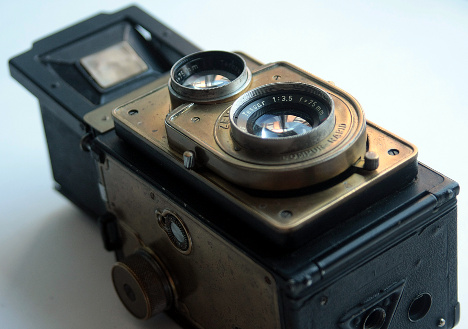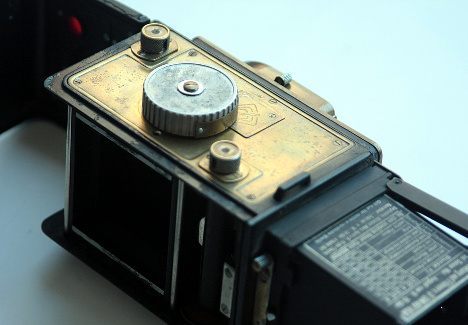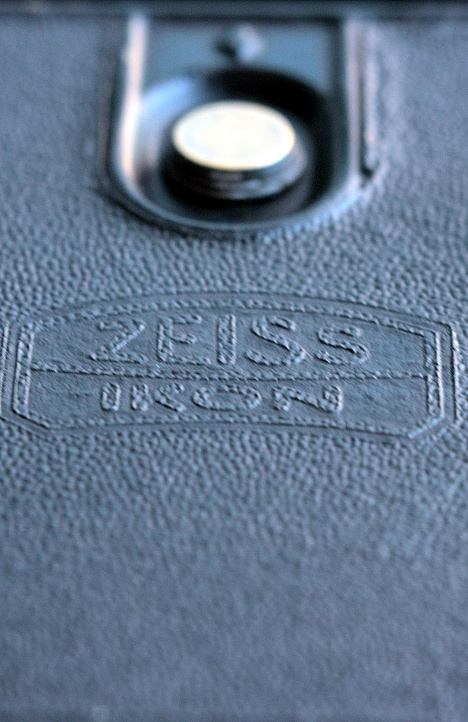CAMERAS > ZEISS-IKON > ZEISS-IKON IKOFLEX
Zeiss-Ikon Ikoflex
Zeiss-Ikon manufactured the Ikoflex series of TLR cameras since the beginning of the 1930s until the end of the 1950s, including variations in the different models along that period. The original goal behind the introduction of these cameras was for Zeiss-Ikon to compete with Franke & Heidecke's Rolleicord. Should we compare the features shared between Rolleicords and Ikoflexes side by side, similarity becomes quite obvious. Rolleicord mounted 75/3.5 Xenar lenses and the Ikoflex IIa a similar Tessar; the Rolleicord did not have self timer, nor did the Ikoflex; the Rolleicord advances film by using a side knob instead of the crank system of the Rolleiflexes, and the same method was used for the Ikoflex; the Rolleicord does not cock the shutter automatically after film advance, nor does the Ikoflex IIa. And it goes on and on and on. As I don't own a Rolleicord, I have still to perform a test in the results delivered by both cameras.
The thing is that, unfortunately for Zeiss, they never managed to success in its goal and never sold too many Ikoflexes, never to say putting Rolleicord in a tight spot. I think the main blame for this can go to Zeiss, failing to put attention in every detail that the professional world wanted in a camera. It is not, however, that bad from a user perspective.
Hand-on an Ikoflex IIa, one of the most remarkable things is its small size - not that small if compared with some others 35mm film cameras, but taking into account that this camera provides a negative 5x that of a 35mm camera. This makes the camera quite portable, and combined with its original ERC - or another compatible - it can be carried by the neck easily.
Other thing one notices once becomes familiar with the camera, is that. somehow, it lacks character. Of course, it is well built, all metal, solid, with quality out of question as is usually Zeiss' rule. However the design, the controls, etc. seems to lack imagination. The focusing knob, for example: of course it works, but is purely functional. That is something shared by all wheels and knobs in this camera.
It is clear that, when on the engineer's drawing board, functionality took precedence over aesthetics. Indeed, some features allow this camera to stand out, such as the borders around the lenses and shutter block.
The construction, as said, is quite solid. It has a good finishing and it is equally noticeable that it was mounted by skilled hands. Even then, it is not specially durable, or better said it does not seem to be that durable, when compared with that Rolleicord. This, together with a better aesthetic design, provides a probable reason of the preference towards the Rolleicord against the Ikoflex.
The viewing lens is a Teronar, with a focal distance of 75mm and an aperture of f/3.5 while, as said, the taking lens is a Tessar, also 75/3.5 mounted on a Compur-Rapid shutter with speeds between 1 second and 1/500 plus B. In addition, the Tessar lens mounted on these cameras was provided with "T" multicoatings, improving even more the Tessar's performance, whose features are well known and that most probably explains why the Ikoflex IIa is still quite sought after by both users and collectors.
One of the odd things of this camera is the way the shutter behaves once the 12 pictures has been taken and the roll film is finished. Actually, the shutter stops working once this point is reached, and is locked until the frame counter is manually pressed and turned until positioned in the first number. At this point, the dial will lock with an audible "click" and it will be ready for shooting again. Otherwise, the advance mechanism will simply go forward forever, rotating the counter wheel from 1 to 12 without locking for shooting.
One advantage point of this lock system is that a small mark is shown besides the release lever, white when locked and red when ready for shooting. In this stage, you just need to cock the shutter, compose and shoot.



